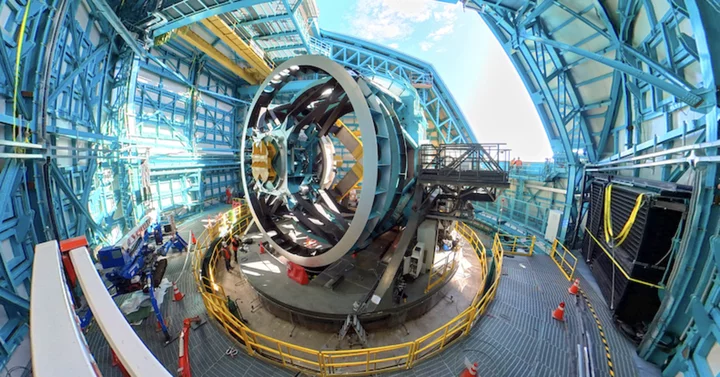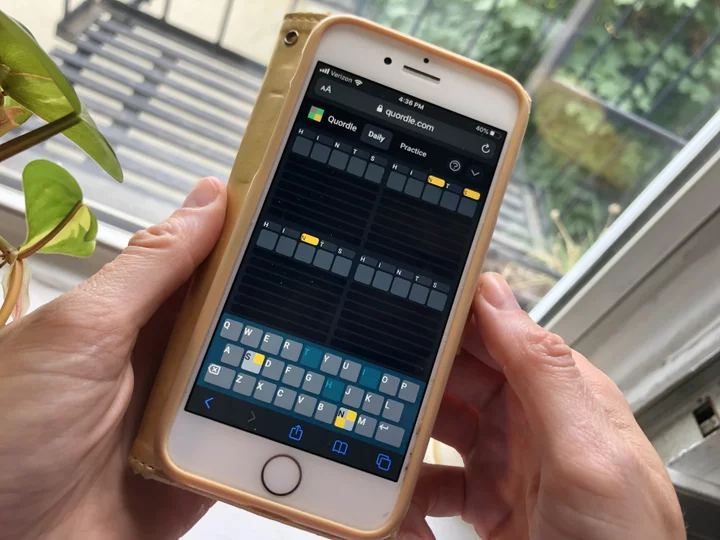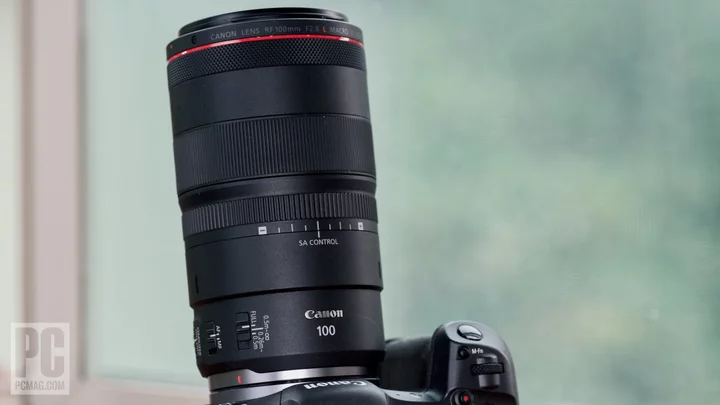A new age of colossal telescopes is upon us.
One of these advanced observatories, the Vera C. Rubin Observatory located in the dark Chilean mountains, is in its last stages of construction and set to come online in mid or late 2025. An astronomer working on the observatory, Mario Juric, a professor at the University of Washington, posted a short video on X (formerly Twitter) showing Rubin's space-viewing prowess.
The observatory's 8.4-meter-wide (27.5 feet) Simonyi Survey Telescope swivels around fluidly, which will allow scientists to rapidly take images of different cosmic targets.
"Meet the fastest large telescope in the world, the 8.4m Simonyi Survey Telescope at the heart of @VRubinObs. 200+ tons of glass and steel, able to make a 180° turn in less than 20 seconds," Juric posted.
SEE ALSO: High-speed object just crashed into Jupiter, footage showsThe telescope, with its giant mirror, will scan the entirety of the visible Southern Hemisphere sky from its mountainous perch every three or four nights. It will discover new asteroids and billions of new galaxies, while helping to answer fascinating questions about our own cosmic home: Where did Earth's water come from? Did the sun eject planets from our solar system? How different is our solar system from other solar systems?
"Exciting times ahead across the board," Juric told Mashable.
When the observatory identifies or discovers a new object, it will be stored in a database that's open to thousands of astronomers. "I think of us as building the 'crawler and Google search for the sky,'" Juric said. "Now, rather than going to a large telescope (which sometimes can take months to propose, approve, and execute), a scientist will be able to go to a website, run a query, and get to the data in seconds. Huge improvement in efficiency and a democratization of access to best possible datasets."
Here are some of the ways the observatory will vastly improve our understanding of the cosmos:
- Over the past couple centuries, astronomers and space agencies like NASA have found some 1.2 million asteroids in our solar system. After three to six months of observations, Rubin will double this number. In 10 years, a whopping 5 million asteroids will be known, Juric said.
- The number of icy worlds beyond the distant planet Neptune ("trans-neptunian objects" and dwarf planets) will increase by around tenfold.
- There are two known interstellar comets today. Ruben will identify between 10 and 50 times more.
- "And — should "Planet X" exist— there's a high chance Rubin would find it (we cover the entire area on the sky where it's likely to be)," Juric explained. Planet X is a speculative world in our solar system that may exist well beyond the orbit of Pluto.
The Vera C. Rubin Observatory with a portion of the Milky Way galaxy in the night sky. Credit: RubinObs / NOIRLab / NSF / AURA / B. QuintWant more science and tech news delivered straight to your inbox? Sign up for Mashable's Light Speed newsletter today.
Other futuristic telescopes will soon join Rubin. The Giant Magellan Telescope, researching the universe's evolution and the nature of planets beyond our solar system (exoplanets), comes online in the late 2020s. The Extremely Large Telescope, with a mirror 128 feet wide, will become the largest optical telescope on Earth later this decade.









